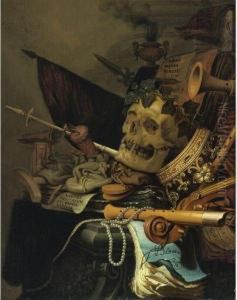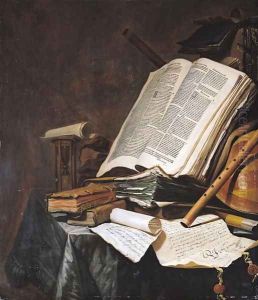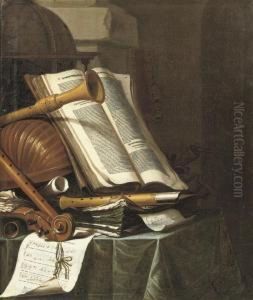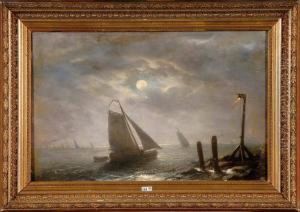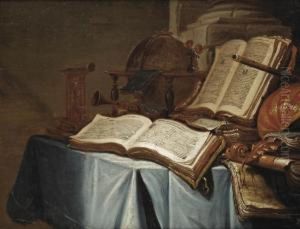Jan Vermeulen Paintings
Jan Vermeulen was a Dutch Golden Age painter and engraver, born in 1628, in the Netherlands. Not to be confused with other artists of similar names from the same era, Vermeulen specialized in still life paintings, particularly those depicting musical instruments, books, and vanitas themes, which are symbolic works of art depicting the transience of life, the futility of pleasure, and the certainty of death.
Vermeulen's works are characterized by their intricate detail and the use of light to create depth and texture. His still lifes often include a variety of objects rich in symbolic meaning, curated in a way that reflects the Baroque period's fascination with allegory and the contemplation of life's brevity.
Despite his talents, Jan Vermeulen remains a relatively obscure figure within art history, with limited information available about his life beyond his artwork. He lived and worked during a period in which the Dutch Republic was experiencing unprecedented wealth and cultural achievement, which was reflected in the flourishing of the arts, particularly in painting.
Vermeulen's career unfolded during the Dutch Golden Age, a period when artists such as Rembrandt, Frans Hals, and Johannes Vermeer were also active. However, unlike these contemporaries, Vermeulen did not achieve the same level of fame or historical recognition. His works, nonetheless, contribute to the rich tapestry of Dutch artistic heritage and provide insight into the era's still life genre.
Jan Vermeulen died in 1691, leaving behind a modest but compelling collection of artworks that continue to be studied and appreciated by art historians and enthusiasts for their beauty and historical value.
